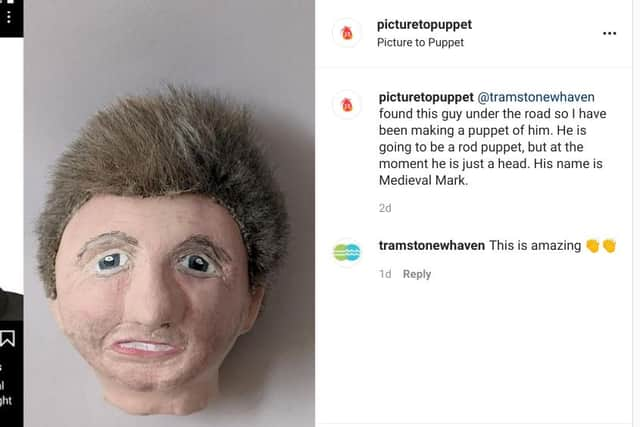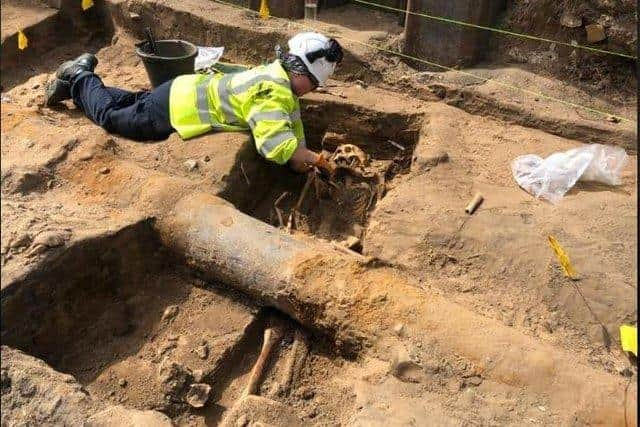Meet Medieval Mark - the puppet that reveals what a man in Leith from 700 years ago looked like


Let us know what you think and join the conversation at the bottom of this article
Picture to Puppet, who run the Leith Toy Hospital in Constitution Street, started making ‘Medieval Mark’ based on images of centuries-old males that were uncovered as part of the Trams to Newhaven project.
The small company, who make puppets by hand, have created the head after seeing facial reconstructions of remains dating back to between the 14th and 17th century that were discovered during the excavation of the nearby South Leith Parish Church graveyard.


Advertisement
Hide AdAdvertisement
Hide AdA team of archaeologists exhumed more than 360 bodies from outside the church on Constitution Street in summer last year.
Masters students from Dundee University then reconstructed two faces using special 3D scanners to build up digital versions of the skulls.
The first two lifelike pictures featured a man and woman both aged between 35 and 50. Early forensic analysis using hi-tech software indicated that the woman may have suffered from nutritional deficiencies.
Picture to Puppet who produce hundreds of custom puppets and toys a year posted on their instagram page.
Advertisement
Hide AdAdvertisement
Hide AdThey wrote: “Found this guy under the road so I have been making a puppet of him. He is going to be a rod puppet, but at the moment he is just a head. His name is Medieval Mark.”
Excavations outside the church on Constitution Street took place after investigations showed that in the medieval period the church’s graveyard extended across the road with graves surviving beneath the road surface.
Experts also found whale bones and a 17th century cannonball as well as the remains of a large stone wall, found beneath the junction of Bernard Street and Constitution Street.
The remains are being examined and its hoped analysis will reveal information on the origins, health, diseases and diet of the people of medieval Leith.
Advertisement
Hide AdAdvertisement
Hide AdAt the time of the excavation City Archaeologist John Lawson said: ‘’The historic port and town of Leith is one of Scotland’s most significant urban archaeological sites. It is hoped that further new discoveries will be made and that we will learn important new evidence for the lives of Leith’s medieval inhabitants so that we can tell their story to modern Leithers.’’
A message from the Editor:
Thank you for reading this article. We're more reliant on your support than ever as the shift in consumer habits brought about by coronavirus impacts our advertisers.
If you haven't already, please consider supporting our trusted, fact-checked journalism by taking out a digital subscription.
Comment Guidelines
National World encourages reader discussion on our stories. User feedback, insights and back-and-forth exchanges add a rich layer of context to reporting. Please review our Community Guidelines before commenting.